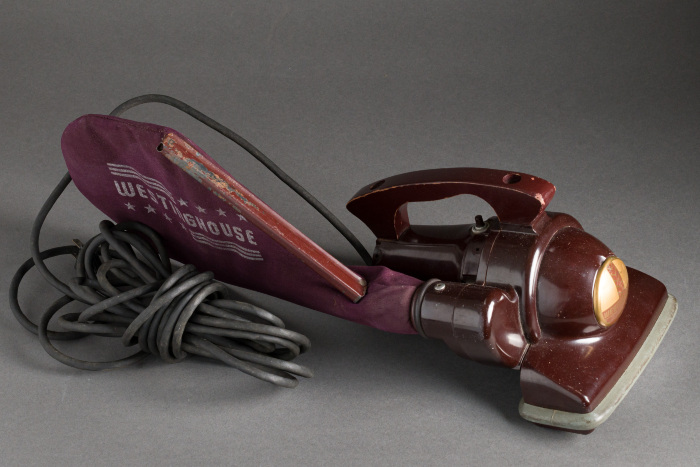
Related Object: Handheld Vacuum
Canadian Westinghouse Company
Organization
Identifier
CU.ENT.00409
Display date
1896
(foundation)
History
Westinghouse Manufacturing Company was founded in 1896 in Hamilton to sell and manufacture air brakes for steam railways. Seven years later, Canadian Westinghouse Company was incorporated to manufacture electrical equipment and large and small household appliances such as fridges and toasters. In 1922 the American and Canadian branches collaborated to produce the first radiotron (vacuum-tube-powered radio) manufactured in Canada, although it was held back from the market for five years because of technical unreliability. The most collectible Canadian designs to emerge from this century-old Canadian branch plant are its Personality radios.
After the Second World War, Westinghouse produced a range of long- and short-wave wooden console and tabletop radios as we as rain/phonograph combinations in traditional furniture designs. The branch plant's first foray into industrial design appears to have been in 1947, when it launched a Bakelite radio, Model 578A. Its shape was largely defined by the parameters of compression moulding, resulting in a similarity to models produced by Rogers. Majestic and other manufacturers.
Throughout the forties and fifties, the engineer Thomas Penrose oversaw the production of small appliances, including electric toasters, kettles and irons. In 1971 the company received an IDAP (Industrial Design Assistance Program) grant from the National Design Council to co-develop the partially plastic Galaxy electric kettle with the Toronto-based industrial design firm Savage Sloan. Westinghouse Canada (as it was now named) merged with the major appliance company CAMCO in 1977." (Design in Canada, 2004, p. 232).
After the Second World War, Westinghouse produced a range of long- and short-wave wooden console and tabletop radios as we as rain/phonograph combinations in traditional furniture designs. The branch plant's first foray into industrial design appears to have been in 1947, when it launched a Bakelite radio, Model 578A. Its shape was largely defined by the parameters of compression moulding, resulting in a similarity to models produced by Rogers. Majestic and other manufacturers.
Throughout the forties and fifties, the engineer Thomas Penrose oversaw the production of small appliances, including electric toasters, kettles and irons. In 1971 the company received an IDAP (Industrial Design Assistance Program) grant from the National Design Council to co-develop the partially plastic Galaxy electric kettle with the Toronto-based industrial design firm Savage Sloan. Westinghouse Canada (as it was now named) merged with the major appliance company CAMCO in 1977." (Design in Canada, 2004, p. 232).
History Source
Design in Canada (2004), p. 232.
Domicile
Canada